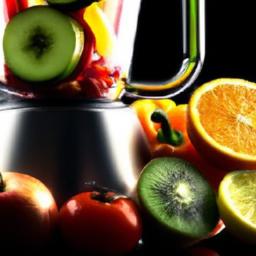Discover the World of Tea: Six Must-Know Varieties to Explore
Tea ranks among the globe’s most cherished beverages, savored across cultures for millennia. But did you realize the vast diversity within the tea world? Each type offers its own distinct flavor, hue, and fascinating backstory. Whether you’re seeking the perfect brew to energize your day or aiming to dazzle friends with your tea expertise, this guide will introduce you to six essential teas you should have on your radar.
Invigorating Teas That Pack a Punch
Not all teas exude calmness-some are potent wake-up calls that rival your morning espresso. These energizing teas combine intriguing taste profiles with robust caffeine content, guaranteeing a lively start or boost anytime you need it.
- Matcha: Originating from Japan, this finely ground green tea powder delivers a concentrated, smooth surge of energy. Rich in antioxidants called catechins, matcha provides a stimulant effect without the common jitters. Drinking matcha involves whisking the entire powdered leaf into your drink, creating a thick, vibrant green infusion that’s both flavorful and nourishing.
- Yerba Mate: With roots in South America, yerba mate is beloved for its bold, herbaceous character. Offering a caffeine level similar to a strong cup of coffee, it also contains vitamins and minerals such as magnesium and potassium, making it a healthful energizer favored by many.
- Pu-erh: This unique Chinese tea undergoes a post-fermentation process, developing deep, earthy flavors akin to aged wine. Pu-erh is heralded for its digestive benefits and potential mental clarity enhancement, standing out as a sophisticated, matured choice for tea aficionados.
- Oolong: Straddling the line between green and black tea, oolong undergoes partial oxidation, resulting in a complex array of flavors that can range from floral and fruity to toasted and rich. With moderate caffeine levels, oolong is ideal for those seeking a gentle yet perceptible lift.
| Tea Variety | Caffeine Content | Flavor Notes |
|---|---|---|
| Matcha | High | Velvety, vegetal |
| Yerba Mate | Medium-High | Robust, grassy |
| Pu-erh | Medium | Earthy, aged |
| Oolong | Medium | Floral to roasted |
Curious to awaken your palate? These teas offer exciting tastes and energizing qualities-perfect for adding some variety to your daily cup.
Green Tea: The Evergreen Wellness Champion
Green tea is much more than a trendy health drink-it’s a time-honored beverage steeped in tradition and wellness benefits. This tea’s leaves are quickly steamed or pan-fired to preserve their natural green hue and fresh flavor, making it abundant in powerful antioxidants known as catechins, which combat cellular damage and support longevity.
The caffeine content is moderate, delivering a smooth alertness without the harsh spikes typical of stronger caffeinated drinks. Recent research also suggests green tea can assist with metabolism regulation and fat oxidation, positioning it as an excellent ally for weight management when combined with a balanced lifestyle.
- Loaded with natural antioxidants that bolster health
- Contains gentle caffeine that refreshes without anxiety
- Potential aid in fat metabolism and weight control
- Promotes mental clarity while easing stress
- Versatile to enjoy both hot and iced
Given its multitude of perks, why not replace one of your usual beverages with green tea this week? You might be surprised at the uplift to your energy and mood.
The Enduring Appeal of Black Tea
Black tea dominates the global tea market-and for good reason. Its rich, robust profile can vary from malty sweetness to smoky or even peppery notes, offering versatility unmatched by other varieties. Because it is fully oxidized, black tea exhibits a deeper color and intensity.
Caffeine-wise, it sits comfortably between green tea and coffee, giving a rejuvenating push without overwhelming the senses. It’s also exceptionally shelf-stable, easily found worldwide, and pairs wonderfully with milk, lemon, or sugar, making it a staple in countless traditional blends such as English Breakfast and Indian Masala Chai.
| Characteristic | Significance |
|---|---|
| Bold Taste | Adaptable for various palates and recipes |
| Moderate-High Caffeine | Stimulates alertness without excess jitters |
| Widely Accessible | Available in nearly all markets globally |
| Great Compatibility | Delicious with dairy, citrus, or spices |
Whether enjoyed piping hot or chilled over ice, black tea’s flavors stay vibrant, making it the backbone of many popular tea-based beverages. What’s your favorite way to take your black tea-classically sweetened or boldly spiced?
Unveiling the Mystique of Oolong Tea
Oolong tea embodies a captivating middle ground, offering the best of both green and black teas through a unique partial oxidation process. This technical “sunbathing” stage imparts a diverse spectrum of tastes, from delicately fruity and floral to hearty and toasted, reflecting its artisanal craftsmanship.
- Steep More Than Once: One batch of leaves can provide multiple infusions, with each brew unveiling subtle new flavors.
- Leaf Shapes Matter: Rolled “pearls” release flavors gradually, while twisted leaves offer a bolder initial taste.
- Freshness Is Crucial: For optimal aromatic and flavor qualities, consume within a year of purchase.
The complexity of oolong is heavily influenced by its origin and production nuances-roasting length, humidity control, and oxidation levels shape the final cup. For tea enthusiasts eager to experiment, sampling a variety of oolongs side by side offers an exciting sensory adventure.
The Elegance and Benefits of White Tea
Known as the “noble” variety, white tea is the least processed of all true teas, made from young buds and leaves that undergo minimal handling. This gentle drying technique preserves the delicate, subtle sweetness and maximum concentration of antioxidants, particularly polyphenols.
- Soft, mild flavor that’s approachable even for novices
- High antioxidant content supports cardiovascular and skin health
- Very low caffeine, making it suitable for sensitive drinkers
- Natural purity with no artificial processing additives
White tea’s understated grace makes it an excellent choice for those seeking a healthful yet refined daily beverage to sip throughout the day without overstimulating.
Herbal Teas: Flavorful Caffeine-Free Alternatives
Herbal teas, or tisanes, derive from an array of botanicals other than Camellia sinensis, offering a caffeine-free way to enjoy vibrant flavors and therapeutic properties any time of day. They are perfect for relaxation, digestion, and overall wellness.
- Chamomile: A soothing infusion known for promoting restful sleep and easing anxiety, often described as a warm floral embrace.
- Peppermint: Refreshing and invigorating, this tea aids digestion and can calm stomach discomfort with its menthol-rich profile.
- Rooibos: A South African red tea, naturally sweet and packed with antioxidants, making it a popular sugar-free indulgence.
- Hibiscus: Vividly red and tangy, hibiscus tea may support blood pressure regulation and adds a fruity zest to your cup.
- Ginger: Known for its warming spice and anti-inflammatory qualities, ginger tea is excellent for soothing upset stomachs and boosting circulation.
Mix-and-match these herbs to create personalized blends-try chamomile with lavender for ultimate calmness, or peppermint with ginger for a zesty refreshment. Despite lacking caffeine, herbal teas deliver rich, diverse flavors and healthful benefits that can complement your tea ritual anytime.
Frequently Asked Questions About Popular Teas
Q: Which six teas should everyone be familiar with?
A: The essential six are green, black, white, oolong, pu-erh, and herbal teas. Each features distinct flavors and cultural significance.
Q: What distinguishes green tea?
A: Green tea is lightly processed, maintaining a fresh, grassy flavor and packed with antioxidants. It provides a moderate caffeine boost with a calming edge.
Q: Is black tea simply a stronger green tea?
A: Not exactly. Black tea is fully oxidized, resulting in darker color and richer, often maltier flavors, differing notably from green tea’s profile.
Q: Why is white tea named so?
A: It’s called white tea because its young leaves and buds are covered with fine white hairs, and it is the least processed, yielding a gentle taste.
Q: What taste does oolong tea offer?
A: Its partial oxidation creates a wide flavor range-from light floral and fruity tones to deep roasted notes-making it versatile and intriguing.
Q: What is pu-erh tea?
A: A fermented Chinese tea that matures over time like fine wine, offering rich, earthy flavors and potential digestive benefits.
Q: Are herbal teas considered “true” tea?
A: Herbal teas do not come from the tea plant and contain no caffeine, but they are beloved as flavorful, health-supporting infusions.
Q: How do I pick the best tea for me?
A: Consider your preference for caffeine and flavor-need energy? Choose black or green. Desire calm? Opt for white or herbal. Love variety? Oolong awaits.
Q: Can I blend different teas?
A: Absolutely! Experiment with combinations, but mind varying steep times and temperatures to get the best from each tea.
Armed with this knowledge of six remarkable teas, you’re ready to embark on your own flavorful journey. Remember, every tea type-from potent matcha to soothing chamomile-carries unique stories and sensations. So, brew your perfect cup today, sip mindfully, and allow tea’s centuries of tradition and diverse flavor to enchant your senses. Your next favorite brew could be brewing now!



